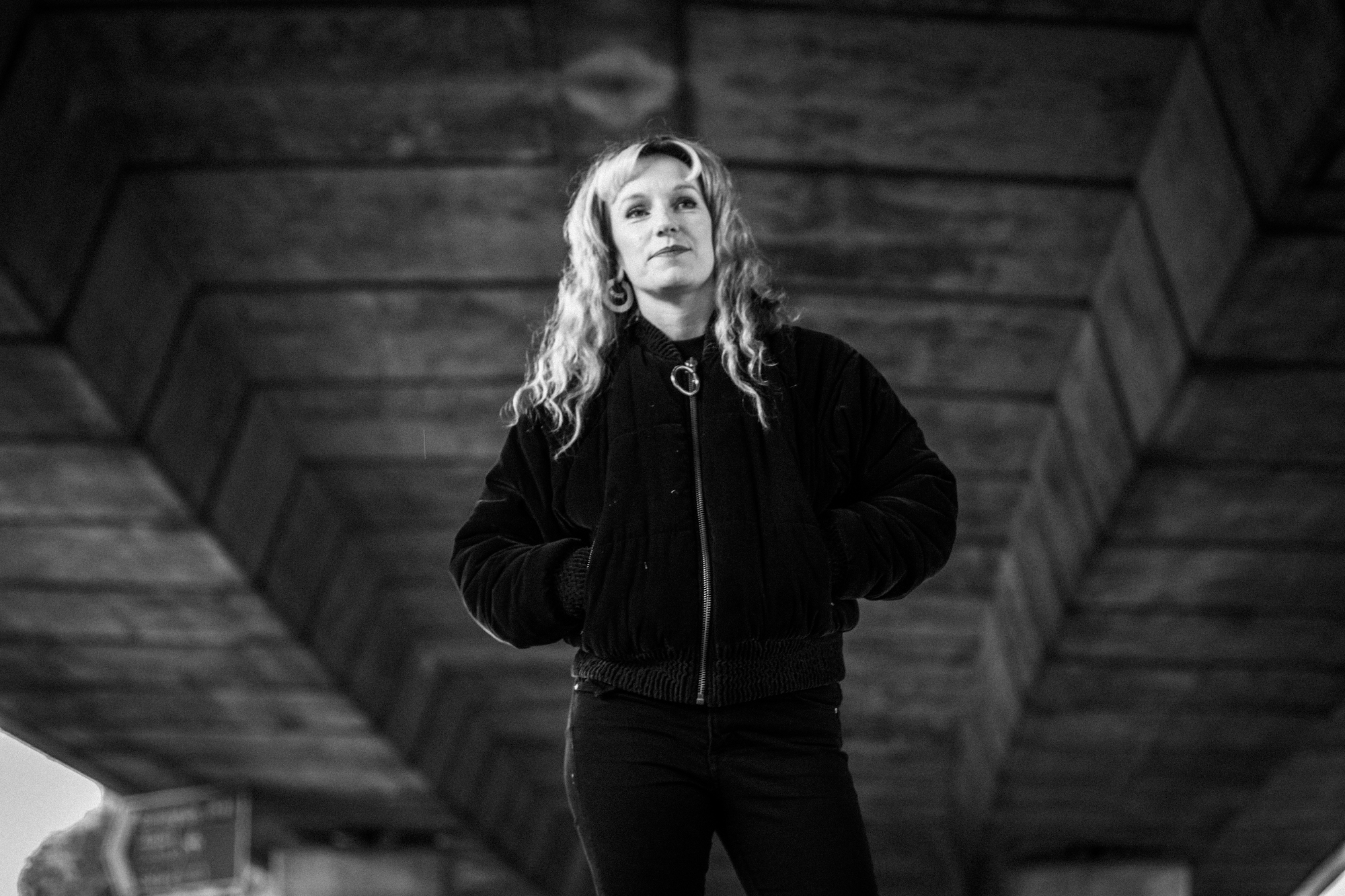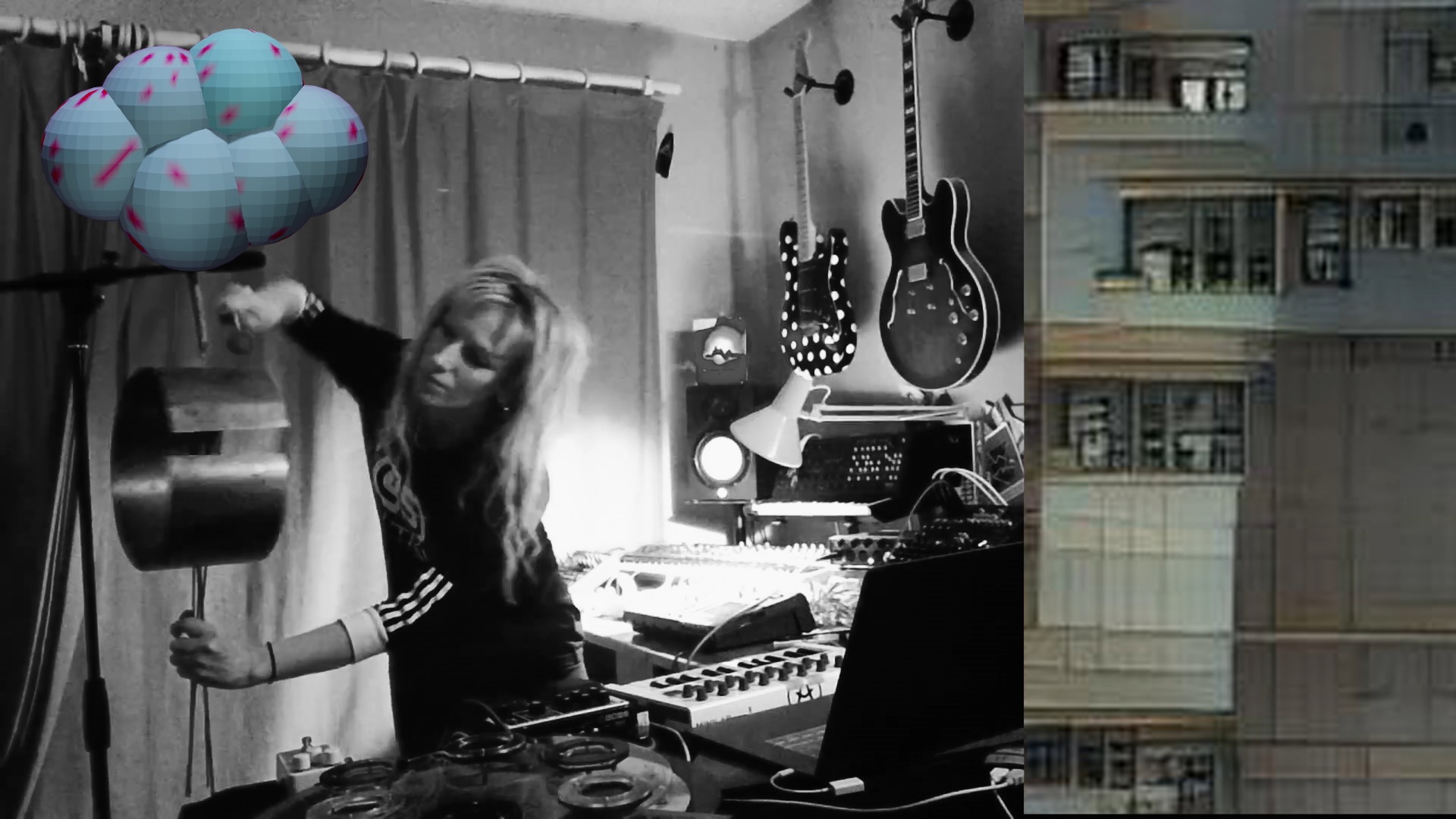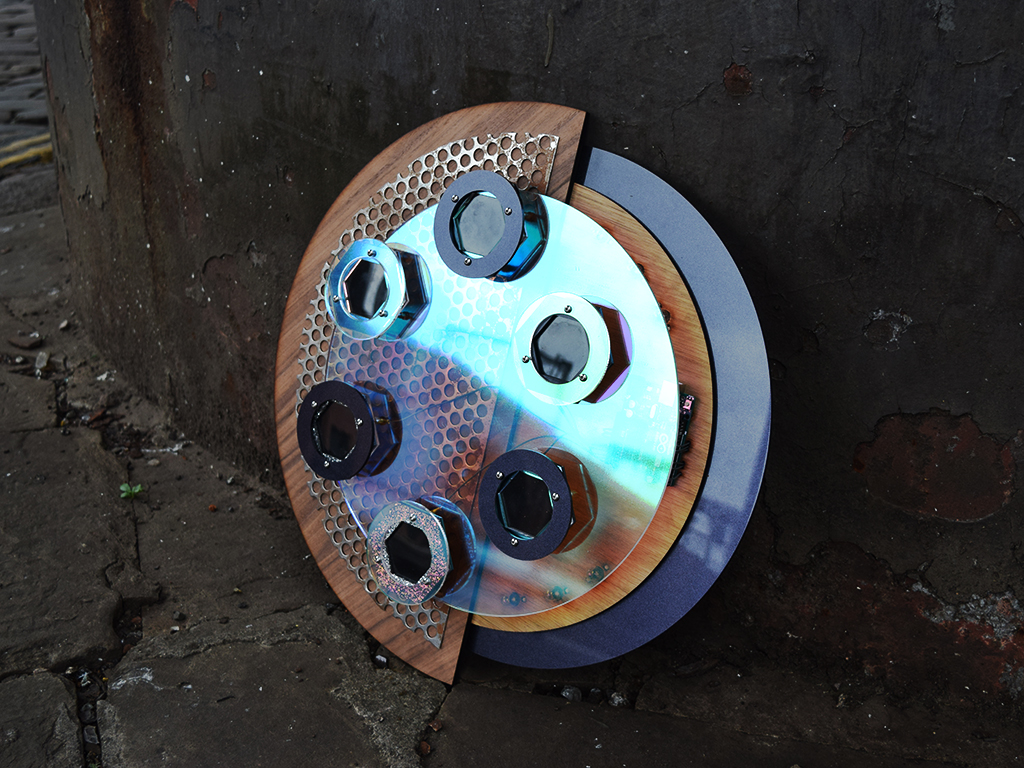Vicky Clarke: the art of noise
Exploring human-machine relationships and the democratic nature of DIY instruments, Manchester artist Vicky Clarke works in the spaces between technology and sound. Juno’s Greg Scarth hit her up for a chat about lockdown life, sonic heroes and why she sees echoes of sound art in music by Actress and Oneohtrix Point Never.

Juno: First of all, for those who aren’t familiar with your work, how do you describe what you do?
Vicky Clarke: I’m a sound artist who works with DIY electronics and sound sculpture to build instruments and interfaces for live performance and installation work. I’m interested in human-machine relationships and like to explore the inherent sound of materials working with field recordings, electronic noise textures and contact microphones to experiment and uncover different sound worlds.
I’m currently doing a residency at NOVARS centre for innovation in sound at the University of Manchester, exploring machine learning and musique concrète and working towards my first album release. I’m also co-founder of Noise Orchestra, a DIY electronics project building noise machines that translate light into sound, and an Amplify Digital Arts Initiative artist with MUTEK.
SLEEPSTATES_Distant Arcades_MUTEK from Vicky Clarke on Vimeo.
Tell us about your background. How did you get involved in making art with sound and what inspired you to explore it?
My first venture into working with recorded sound was when I bought a small field recorder for travelling around India. I found listening back to the environmental recordings so much more evocative than the visual photographs and started dabbling with editing and production with Ableton. I did a very early installation (‘100bpm train waltz’) where I used the recordings of trains combined with lots of metronomes, where audiences had to try and sync themselves to the train rhythms. These early experiments opened up a world of playing with sound as material and the ability to electronically manipulate and transform the material into new forms was truly magical for me and opened up a world of sonic possibilities.
I then did an art foundation [course], where I learned about the history of musique concrete and started building sculptural objects and amplifying the materials. I started to build noise circuits and found a love for electronics, building these systems that came alive and made an insane noise when you powered them up. The idea that you could use physical materials and electrical forces with your own hands to make your own mini machines was so exciting. I liked the idea of noise as an alt_system, that anyone can be a music maker, totally democratic.

The history of sound art is interwoven with fascinating personalities, stretching all the way back to people like Luigi Russolo. Are the history and the people important to you?
Definitely. Russolo’s Art of Noises [a 1913 Futurist manifesto that laid out the early theoretical framework of sound art] is a huge influence, and our Noise Orchestra project is inspired heavily by the Russian avant-garde artists of the 1920s who worked with graphical sound techniques and noise machines. One of our pieces, ‘SWARM: Play the light of the city’, took inspiration from an artist I admire called Arseny Avraamov, who is credited as the person to create the first public sound art piece, ‘Symphony of Sirens’. The idea that you could play the sound of the city and reframe your environment was very inspiring. His graphical sound techniques also inspired our ‘Play the Collections’ work with light theremins and paper scores, which we explored through a residency at National Science and Media Museum.
So yes, the history of sound art is really important, but like most written histories it is currently very male-dominated and needs to be opened out to include other voices and pioneers, championing the incredible work of contemporary women working today and from history.
Are there any particular sound art heroes that inspire you?
I’m hugely inspired by the female pioneers of the BBC Radiophonic Workshop, Daphne Oram and Delia Derbyshire, who also worked with musique concrète techniques, using found sound and electronic manipulation to create really experimental pieces. I also love the work of Christina Kubisch and her electromagnetic walks, roaming the city with headphones and tuning into the space in a different way through electronic frequencies. I love this idea of opening up an alternative way to perceive your environment.
I’m involved with a few contemporary initiatives that promote women working in music and digital arts, including the Oram Award community and Amplify DAI with MUTEK and Somerset House, with incredible artists. Also in Manchester we have Brighter Sound and Delia Derbyshire Day, who do such brilliant work supporting women and gender minorities in music and sound.
The world of sound art can sometimes seem daunting to those who approach electronic music from the perspective of club culture. How do you think those worlds relate to each other?
I can understand why this might seem daunting especially if coming from the sound vs music perspective, i.e. musically structured vs unstructured, or organised sound vs unorganised sound. For me there are parallels; for example, the ritualistic, communal and experiential feeling of club culture and that getting lost in sound as a phenomenon is a feeling I experience within sound art. One of my favourite sound art ‘events’ was at MONOM in Berlin for CTM festival, a centre for spatial sound where audiences lay on the floor in a huge industrial venue listening to architectural electronics sounds from all dimensions of the space and the feeling of being transported through frequencies.
CTM festival I feel does a great job of showcasing really experimental sonic approaches within an electronic music festival framework. It’s just about interesting ways in or approaches, for me it’s all about the concept, play and experimentation with machines and materials and the context can change depending on the output or the intention. I like to set up systems to see what will emerge and let the materials guide me. Sometimes the output effect is more suited to a gallery setting to think and experience a phenomena or a feeling, or an unfolding sonic experiment. Other times it is suited better as a gestural mood or felt loud in a performative space with an audience. Some of my favourite contemporary electronic artists like Actress, FRKTL, Eartheater and Oneohtrix Point Never for me are totally sound art in their approach to use of materials, which crosses into electronic music and club culture.
Tell us about the technology you use. The DIY approach is fundamental to what you do. You do realise you can just buy synths and drum machines, right?!
Ha, yes and I have a fair few! The technology I use is a combination of professional equipment combined with my own self-built designs, so I have objects and sculptures (mainly made from metal), that I mic up with contact microphones which are put through different effects chains. I work with Ableton Live to explore recorded sound and am obsessed with granulators and samplers; my most favourite recent VSTs are [Output] Portal and [Cong Burn] Strokes. I also have some analogue synths including a [Sequential] Prophet Rev2 and a [Korg] MS-20.
My live set is then a combination of live manipulation of sculpture and recordings combined, and I use my graphene interface to control and improvise with the sounds live. Radio features a lot in my work; I always travel with my Koma Elektronik Field Kit to record radio fragments from different locations. I like these in-between states and finding meaning within the noise fragments.
I like the idea of DIY music tech as a radical act, that we can create our own tools and interfaces to find ways of experimenting and finding a sound that is personal to you. But also by creating our own technologies, it’s a statement of being anti-big tech, and questioning systems of power and having autonomy. I’m really into open source and participation, and in my work as a music educator I always share my processes and methods, as this is how I have learned – from a scrapbook or collage approach or just being really curious and needing to know how things work.
Can you explain what the graphene interface is?
The graphene interface was made as part of my research project MATERIALITY a couple of years back, where I was exploring physical and digital systems in music. I worked with researchers at the National Graphene Institute and made a conductive interface for live gestural performance. It’s a supermaterial MIDI controller, I guess!

What does your studio look like?
I work from two studio spaces. One is the Noise Orchestra studio (this is my DIY electronics project with Dave Birchall), this is at Rogue Studios in Manchester and where we have all our electronics setup for building synths and testing out installation ideas. The space is wall to wall with bits of technological mayhem, things that work, things that don’t, failed circuits, etc! I love being in here getting lost in soldering and being amidst the wires. It’s a very messy workspace at times, but we also run electronics workshops from here too.
At home I have a music production studio setup that is much more minimal and clean with all my synths and DIY kit. This is where I experiment, make my music and record and where I’m currently working on my first album.
How much do the studio setups change from one project to the next?
The project I’m working on will determine where I’ll hang out more to create, for example I’ll build physical interfaces or test synth designs at the Noise studio, but then I’ll work with these objects and create sound pieces in my home studio.
Have the unique circumstances of the last year had an impact on what you’ve been doing? Has it been inspiring or stifling?
The last year made me adapt to the circumstances and learn some new skills. Just before lockdown I’d been in St Petersburg researching machine learning and music, so the lockdown meant that I had time to get stuck into coding and creative machine learning tools, which kickstarted the SleepStates project (which is on-going) exploring machine addiction and states of algorithmic slumber. This piece was shown as part of MUTEK’s online exhibition Distant Arcades. The other thing that was welcome was a change in tempo and a slowing down, which to me was a welcome change. Having more time to think and read was a huge positive amidst all the craziness of what was happening.
Do you think anything’s changed permanently or will things go back to normal eventually?
Of course, like all musicians, I am missing live music and that connection with others en masse through sound. I’m unsure what ‘going back to normal’ will look like fully, but I know that the need we have for being in a space together to be transported through sound isn’t going away. I can’t wait for its return!
Vicky Clarke artist website and Noise Orchestra, Instagram and Twitter.